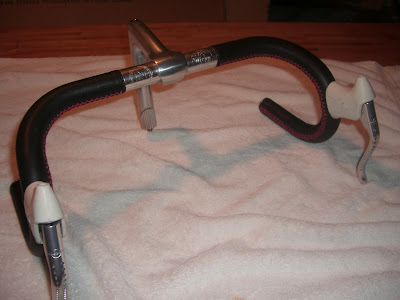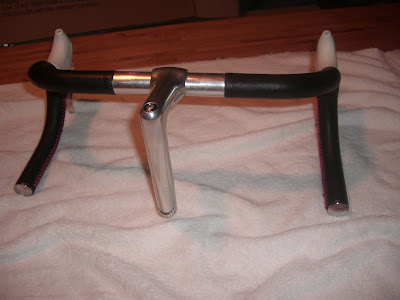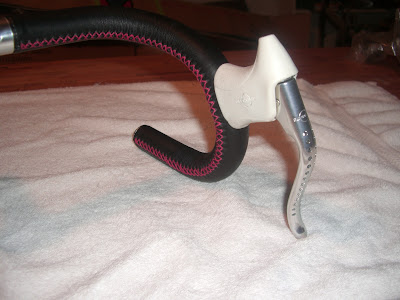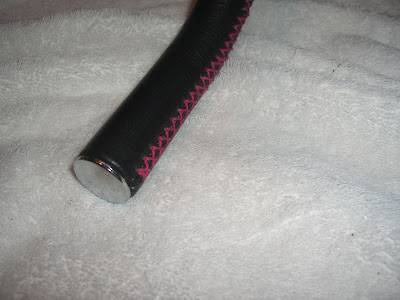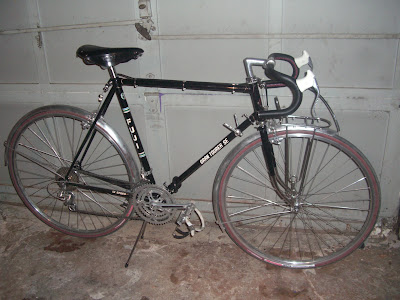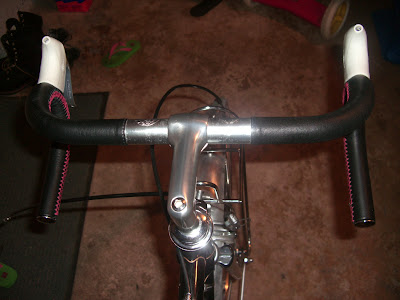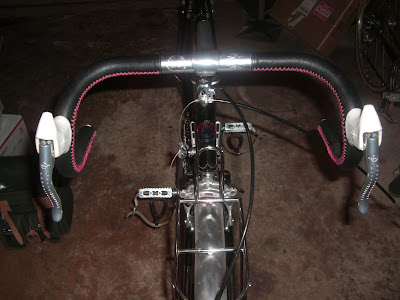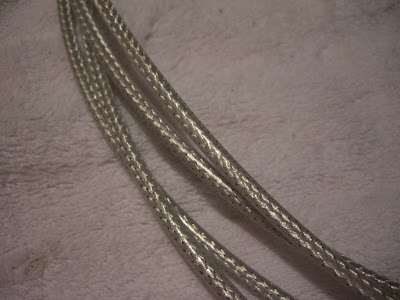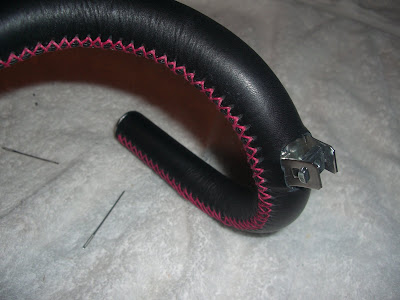Yesterday, I received this Sugino Mighty Tour crank in exchange for some parts from my decommissioned Trek 620:
Currently, I'm stroking my 1981 Gran Tourer to become a bulletproof daily rider. For old guys like me that do things like pull my kid in a trailer, that means a triple. Plus, the stock Maxy double, while quite nifty with "Fuji" pantographs, has a swaged on spider. This is usually fine, but for ultimate abuse and reliability, an integral spider is more reliable.
The crankset cleaned up nicely:
I decided not to de-anodize it, as there were no big gouges to sand out. Also, the Gran Tourer is tending towards matte silver rather than polished.
I did paint the flutes and logo.
Then I popped it into the the oven for one and half hours. Warning kids, don't try this when your wife is at home, or my wife anyhow.
Along with this crank, I purchased a Sugino Mighty Tour bottom bracket from The Bike Stand. Unlike the Maxy bottom bracket, this one has machined bearing surfaces on the cups and spindle. It weighed in at 270 grams.
The fixed cup, apparently in place for 28 years, was no match for the Sheldon cup remover gambit.
The outgoing Maxy bottom bracket weighed in at around 330 grams. I said a silent prayer of thanks to the unknown previous installer who had liberally greased the cup threads. Then I did the same for my posterity when I installed the new cups.
So on the bottom bracket, we're sixty grams in the black on this swap.
The Sheldon fixed cup tool is also good for installation. Following this, 22 grade 25 bearings, and a lotta grease, the bottom bracket is installed. Always be careful to not cross thread the cups and use nothing other than your hand until it is engaged several turns, ensuring no cross-threading. Nothing will ruin your day more than destroying the threads on a bottom bracket.
The outgoing Maxy double cranks weighed in at around 580 grams.
The incoming Mighty Tour triple weighed 640 grams.
So on the crank swap, we're 60 grams in the red, neutralizing the 60 gram weight savings on the bottom bracket swap. However, at the cost of no weight gain, the bike is now a triple, has a stronger crank, and a smoother bottom bracket. And all of this is period correct as well as keeping with the Fuji/Suntour/Sugino theme of the bike. This is vintage wrenching at its best...
The existing Suntour Compe V front derailleur and the Fuji branded Suntour Vx mid-cage rear derailleur accommodated the wider range on the 14/30 rear cluster with minor adjustment to the front stop. On the smallest 34 front ring, the chain goes slack on the 4th cog. However, on the large/large combination, at least one or two links of slack is left. I don't know if I'll take advantage of this, as small front ring/small rear cog combinations are not really cricket. Maybe I'll do this next chain swap.
The chainline, at 46 mm to the middle ring, ended up very slightly outboard of the standard 45 mm. This is pretty minor, but I do have a 118.5mm Mighty Tour Spindle, whereas the one used on this installation is 120mm. There appears to be enough stay clearance to move this in a bit, but like the chain, is such a minor issue that should I even address this, it will be when the system is taken apart for some other reason like routine maintenance.
The lowest gear, 34/30, is pretty low, but still not the stump pulling action that I had on the Trek 620 at 26/30. Conceivably, I could go to a 34 rear cog in the rear, possibly a TA small front ring at 33t, but I'll see if I really need this additional grunt.
Now, do I have to change the stay decal?











